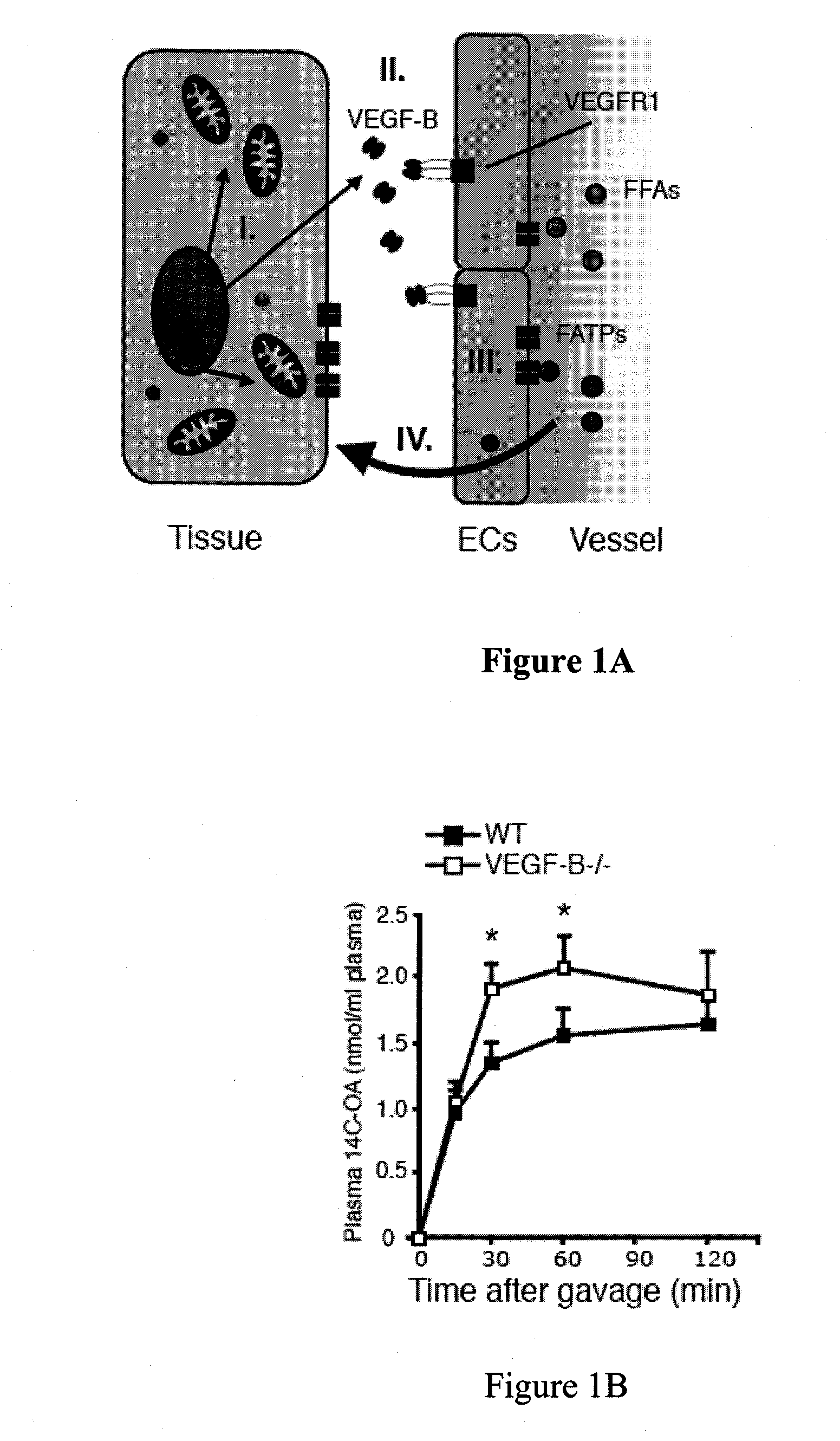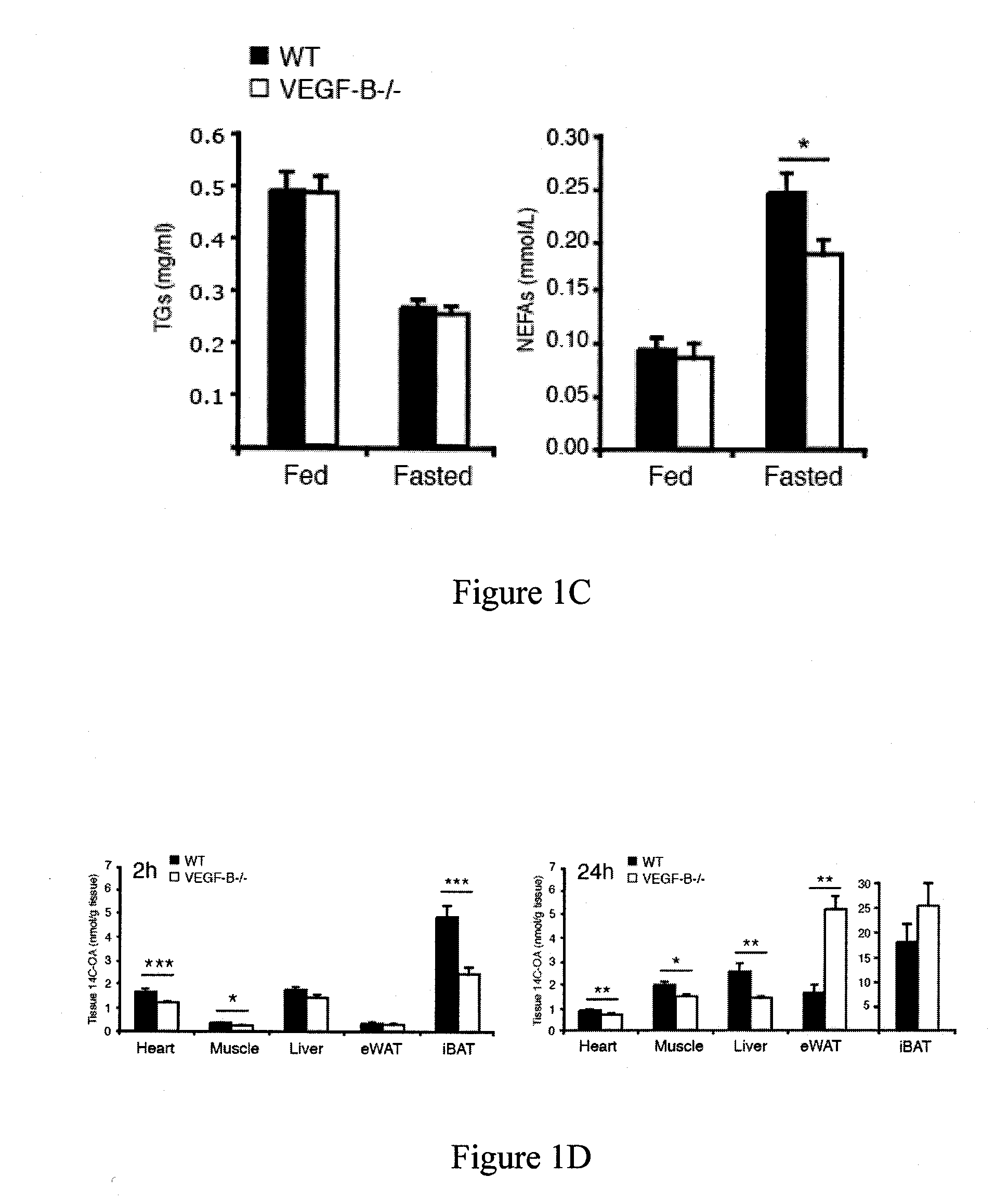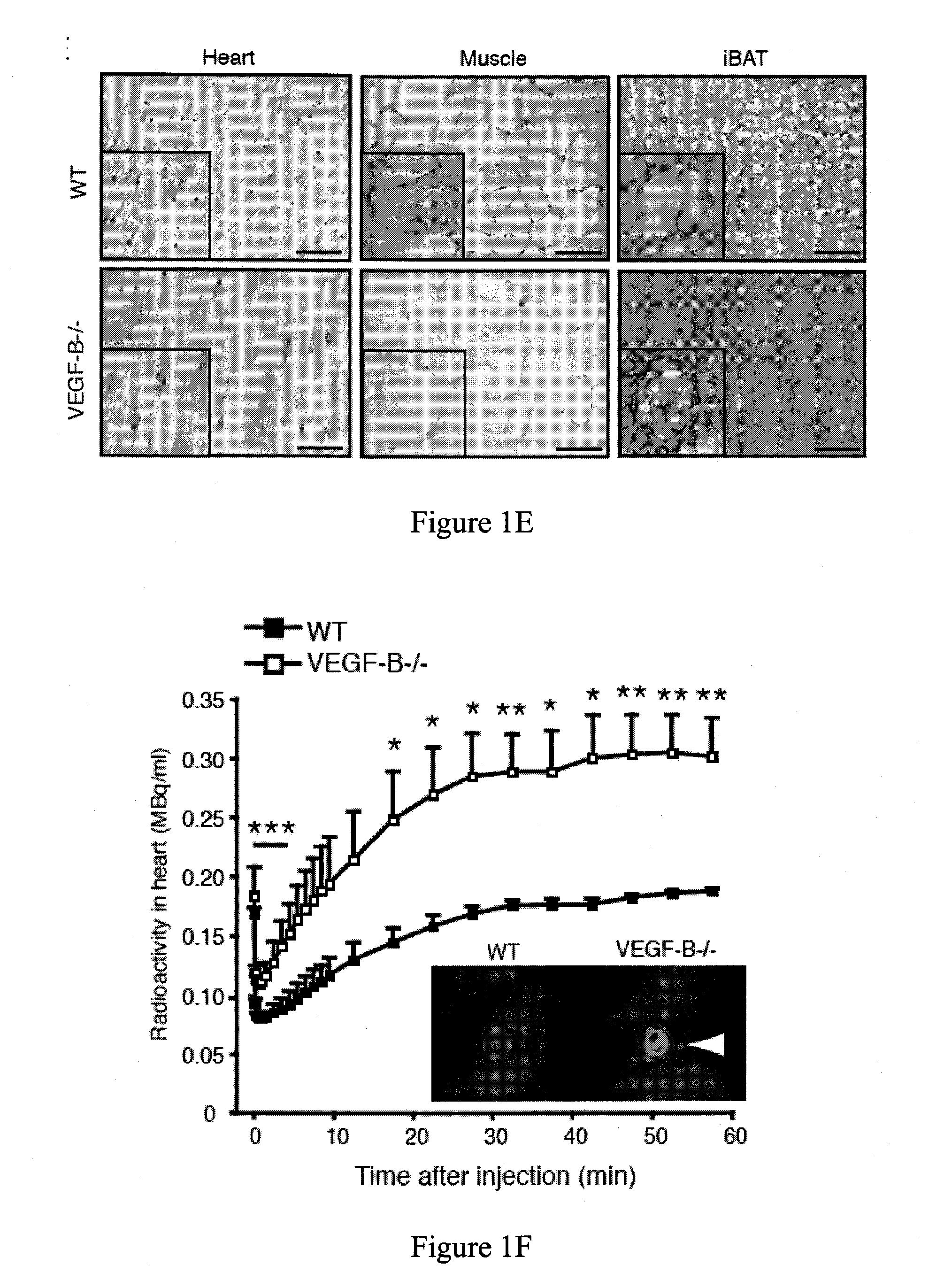Regulation of fatty acid transporters
a technology of fatty acid transporter and fatty acid, which is applied in the direction of antibody medical ingredients, instruments, and metabolic disorders, can solve the problems of poor ability of vegf-b to stimulate angiogenesis, insufficient oxidation of accumulated ffa, and toxic to cells
- Summary
- Abstract
- Description
- Claims
- Application Information
AI Technical Summary
Benefits of technology
Problems solved by technology
Method used
Image
Examples
example 1
Materials and Methods
[0245]Bioinformatics. Microarray expression data from 44 datasets, all generated using the Affymetrix U74A platform, were downloaded from the GEO database (Barrett et al. (2007) Nucleic Acids Res 35, D760-765). Arrays were intensity normalized and merged into one 708 array dataset. A hierarchical clustering procedure (average group linkage, Pearson correlation, threshold r>0.8) was applied to identify groups of coexpressed genes.
[0246]The GNF SymAtlas database (Su et al. (2006) Proc Natl Acad Sci USA 99, 4465-4470) was used to find mouse transcripts correlating (cut-off value ≧0.80) with the expression of mouse Vegfb, Pgf (termed Plgf in the manuscript for clarity) or Vegfa transcripts. In order to classify the correlated transcripts according to their subcellular localization, GeneOntology Component information from NCBI Entrez Gene was used.
[0247]Animals. C57BL / 6N-VEGF-B− / − mice have previously been described by Aase et al. (2001) Circulation 104:358-364. The ...
example 2
Role of VEGF-B in Endothelial Targeting of Lipids to Peripheral Tissues
[0273]Blood vessels deliver oxygen and nutrients to peripheral tissues. Dietary lipids present in circulation have to be transported through the vascular endothelium in order to be metabolized by tissue cells, a mechanism that has been poorly understood to date. The following examples demonstrate that Vascular Endothelial Growth Factor (VEGF)-B has an unexpected role in endothelial targeting of lipids to peripheral tissues. Bioinformatic analysis showed a tight co-expression of Vegfb and nuclear encoded mitochondrial genes, pointing to a role of VEGF-B in metabolism. VEGF-B specifically controlled the uptake of fatty acids via regulation of fatty acid transport proteins (FATPs) expressed by the endothelium. VEGF-B− / − mice had less accumulation of lipids in their peripheral tissues, and instead accumulated lipids in adipose tissue. The co-expression of VEGF-B and mitochondrial proteins discovered in accordance wit...
example 3
Coordinated Expression of Vegfb and Mitochondrial Genes
[0274]Previous studies have shown that Vegfb is highly expressed in metabolically active tissues (Olofsson et al. (1996) Proc Natl Acad Sci USA 93, 2576-2581).
[0275]Microarray data from public repositories were used to identify genes that are co-expressed with Vegfb, in order to investigate possible links to established metabolic networks, cellular processes or signaling pathways. A compendium of 708 microarrays was assembled using mouse data from the NCBI GEO database (Barrett et al. (2007) Nucleic Acids Res 35, D760-765). Genes were divided into clusters based on their expression similarity across the arrays in this compendium. Vegfb unexpectedly clustered among a large co-expression group containing nuclear genes coding for components of the respiratory chain (Table 1). All annotated genes in this cluster, apart from Vegfb, encoded mitochondrial proteins. Analysis of expression of Vegfb versus the mean signal of the co-expres...
PUM
| Property | Measurement | Unit |
|---|---|---|
| pH | aaaaa | aaaaa |
| pH | aaaaa | aaaaa |
| waist circumference | aaaaa | aaaaa |
Abstract
Description
Claims
Application Information
 Login to View More
Login to View More - R&D
- Intellectual Property
- Life Sciences
- Materials
- Tech Scout
- Unparalleled Data Quality
- Higher Quality Content
- 60% Fewer Hallucinations
Browse by: Latest US Patents, China's latest patents, Technical Efficacy Thesaurus, Application Domain, Technology Topic, Popular Technical Reports.
© 2025 PatSnap. All rights reserved.Legal|Privacy policy|Modern Slavery Act Transparency Statement|Sitemap|About US| Contact US: help@patsnap.com



